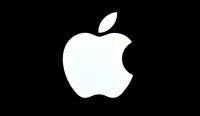Despite a decline in iPhone sales, Apple’s revenue rose 1 percent in its fiscal Q2 (ending March 28) to $58.3 billion, with profit falling about 3 percent to $11.25 billion or $2.55 a share. Prior to the coronavirus pandemic, Apple projected more than $63 billion, but the numbers still exceeded analysts’ expectations of almost $55 billion in revenue. Due to an uncertain economy in the wake of the pandemic, Apple would not project Q3 sales, the first time it declined to do so since it began offering such guidance in 2003.
The Wall Street Journal notes that, in addition positive revenue reports from Facebook and Microsoft last Wednesday, Apple’s results “highlight the strengths of big technology companies even during an economic crisis.”

Apple’s services and wearables sector rose 18 percent to $19.63 billion, proving to “be the difference maker for the company in the March period … [and] underscoring the value of its strategic shift from selling more devices to selling more services and accessories across those devices.” At the same time, sales of the iPhone, iPad and Mac “fell nearly 7 percent to $38.68 billion.”
In Apple’s press release, chief executive Tim Cook said the results showed the company’s “durability as a business and the enduring importance of our products in our customers’ lives.”
WSJ notes that, “Apple said it would add $50 billion to its share-buyback program, a decrease from last year’s addition of $75 billion but still a sign of its commitment to return capital even as buybacks have become controversial in the U.S.” The company’s board also “approved a 6 percent increase in its quarterly dividend to 82 cents a share, building on last year’s 5 percent increase.”
For Q3 (April-June), chief financial officer Luca Maestri reported that, “wearables and iPhone revenue are set to slow from the previous quarter.”
In the China, Hong Kong and Taiwan region — responsible for almost one-fifth of Apple’s total revenue — Apple sales “fell 7.5 percent to $9.46 billion.” Due to factory closures there in February, Apple delayed release of its iPhone SE by one month and “a two-to three-week shutdown of factories also slowed shipments and sales of iPhones outside China.” The company is also “cutting production volume for the four new models by about 20 percent as the coronavirus weakens consumer demand.”
Cook stated that, “Apple’s operations team and suppliers have returned to work and production reached traditional levels by the end of March.” Overall demand for Apple products stayed strong in February, but “then deteriorated as European countries and the U.S. locked down their markets.” April showed an “uptick in demand as Apple released new products, governments made stimulus payments and customers bought new devices to support remote work.”
The Verge adds that, during this period, Apple also joined forces with Google to create “a joint system between Android and iOS that will be utilized for contact tracing.” The companies said that the system will be ready for developers to use in May, “with deeper contact tracing set to arrive in iOS and Android as part of upcoming software updates.”

No Comments Yet
You can be the first to comment!
Sorry, comments for this entry are closed at this time.